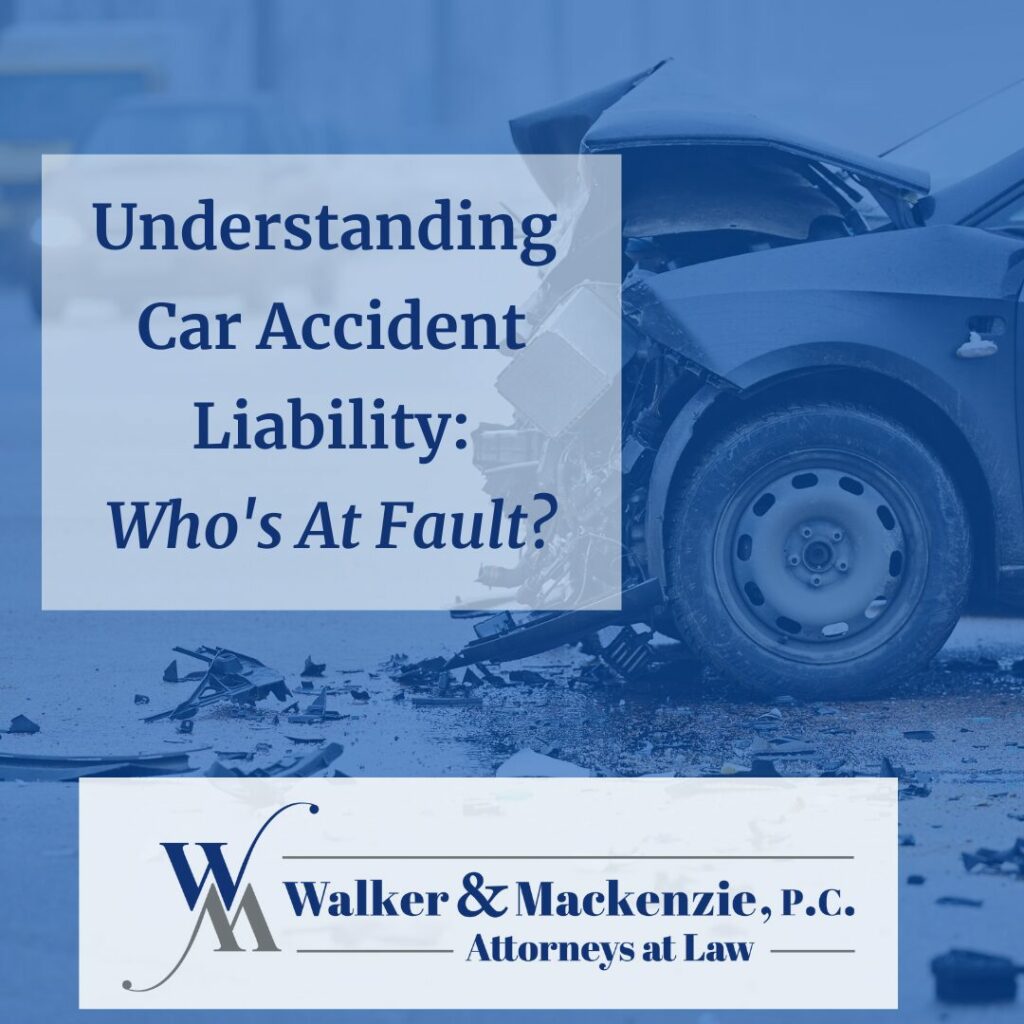Understanding Car Accident Liability: Who’s at Fault?

Negligence and Fault
The foundation of car accident liability lies in the concept of negligence. Negligence refers to the failure to exercise reasonable care while driving, resulting in harm to others. To determine fault, it is necessary to establish the four elements of negligence:
- Duty of Care: Every driver has a duty to operate their vehicle safely, adhering to traffic laws and regulations.
- Breach of Duty: A breach occurs when a driver fails to fulfill their duty of care, such as by speeding, running a red light, or distracted driving.
- Causation: The breach of duty must be the direct cause of the accident and resulting damages.
- Damages: Actual damages, including injuries, property damage, and medical expenses, must be present.
Comparative Negligence
In some cases, multiple parties may share fault in a car accident. Different jurisdictions apply different legal principles to address shared fault. The two common principles are comparative negligence and contributory negligence. New York follows a pure comparative fault system, which means that an injured person can recover for his or her injuries as long as he or she is not 100% at fault.
Under comparative negligence, each party involved in the accident is assigned a percentage of fault. Damages are then apportioned based on the assigned percentages. For example, if you are found 20% at fault and the other driver 80% at fault, your damages will be reduced by 20%.
Gathering Evidence
To determine fault accurately, it is crucial to gather evidence starting at the accident scene. This evidence may include:
- Police reports: These provide an official record of the accident and the officer’s observations.
- Witness statements: Statements from witnesses can provide valuable insight into how the accident occurred.
- Photographs and videos: Visual evidence of the accident scene, damages, and road conditions can support your case.
- Medical records: Medical documentation is essential to establish the extent of injuries and link them to the accident.
Expert Analysis
In complex accident cases, it may be necessary to involve accident reconstruction experts or other professionals who can analyze the evidence and provide expert opinions. Their expertise can be instrumental in determining factors such as vehicle speed, brake usage, and the sequence of events leading up to the accident.
Insurance Companies and Legal Proceedings
When determining fault, insurance companies typically conduct their own investigations. However, their primary objective is to minimize payouts, so their findings may not always align with your perspective. If you disagree with the insurance company’s determination, you may need to pursue legal action to get the compensation that you deserve. Consulting an experienced car accident attorneys at Walker & Mackenzie, P.C. can help you understand your rights and navigate the legal process effectively. We are here to take your call and keep the large insurance companies from taking advantage of you during this vulnerable time.
If you have been involved in a car accident, call Walker & Mackenzie, P.C. today. Our experienced car accident attorneys can guide you through the process and ensure that the responsible party is held accountable. To schedule your free, no obligation, consultation, contact Walker & Mackenzie, P.C. by calling (631) 791-5090.